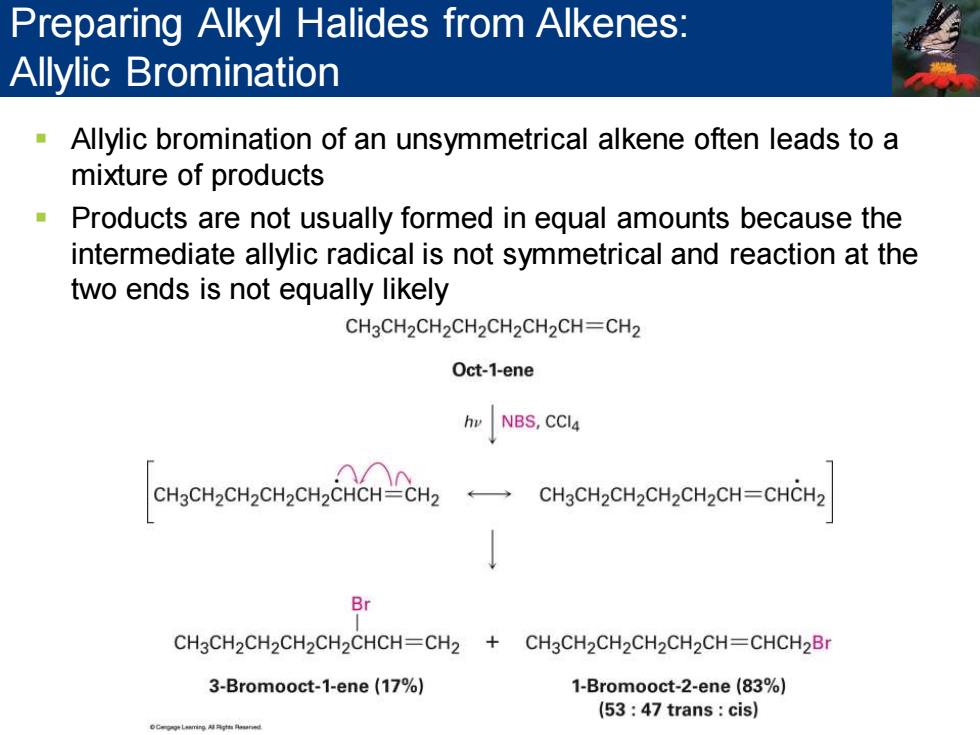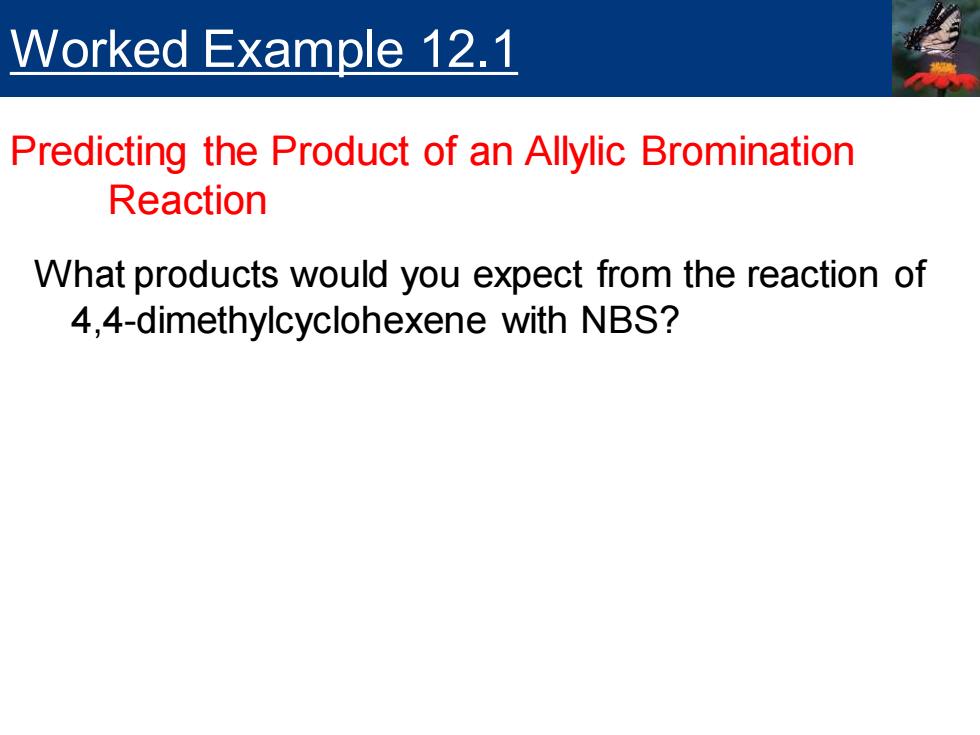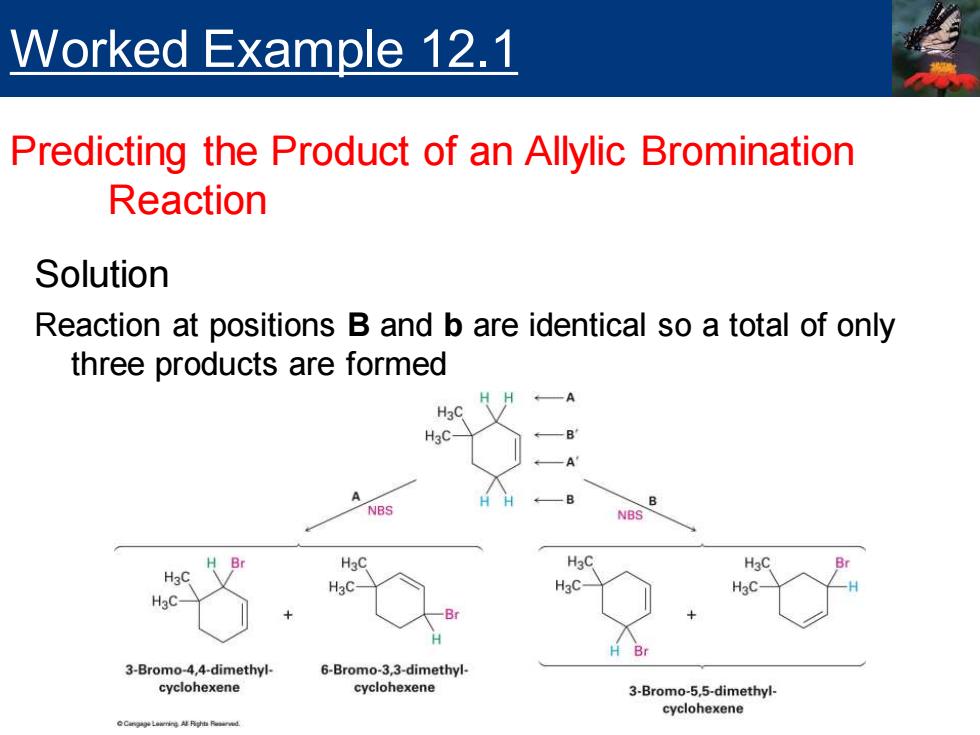
Preparing Alkyl Halides from Alkenes: Allylic Bromination Allylic bromination of an unsymmetrical alkene often leads to a mixture of products Products are not usually formed in equal amounts because the intermediate allylic radical is not symmetrical and reaction at the two ends is not equally likely CH3CH2CH2CH2CH2CH2CH-CH2 Oct-1-ene hr NBS,CCl4 CHCH.CH.CH.CH.CHCHH2 ←→ CH3CH2CH2CH2CH2CH=CHCH2 Br CH3CH2CH2CH2CH2CHCH=CH2 CH3CH2CH2CH2CH2CH=CHCH2Br 3-Bromooct-1-ene(17%) 1-Bromooct-2-ene(83%) (53 47 trans cis)
▪ Allylic bromination of an unsymmetrical alkene often leads to a mixture of products ▪ Products are not usually formed in equal amounts because the intermediate allylic radical is not symmetrical and reaction at the two ends is not equally likely Preparing Alkyl Halides from Alkenes: Allylic Bromination

Preparing Alkyl Halides from Alkenes: Allylic Bromination Products of allylic bromination reactions are useful for conversion into conjugated dienes by dehydrohalogenation with base Br hv NBS KOH CCl4 Cyclohexene 3-Bromocyclohexene Cyclohexa-1,3-diene
▪ Products of allylic bromination reactions are useful for conversion into conjugated dienes by dehydrohalogenation with base Preparing Alkyl Halides from Alkenes: Allylic Bromination

Worked Example 12.1 Predicting the Product of an Allylic Bromination Reaction What products would you expect from the reaction of 4,4-dimethylcyclohexene with NBS?
What products would you expect from the reaction of 4,4-dimethylcyclohexene with NBS? Worked Example 12.1 Predicting the Product of an Allylic Bromination Reaction

Worked Example 12.1 Predicting the Product of an Allylic Bromination Reaction Strategy Draw the alkene reactant and identify the allylic positions. Label the two different allylic positions A and B.Now abstract an allylic hydrogen from each position to generate the two corresponding allylic radicals.Each of the two allylic radicals can add a Br atom at either end(A or a;B or b)to give a mixture of up to four products.Draw and name the products
Strategy Draw the alkene reactant and identify the allylic positions. Label the two different allylic positions A and B. Now abstract an allylic hydrogen from each position to generate the two corresponding allylic radicals. Each of the two allylic radicals can add a Br atom at either end (A or a; B or b) to give a mixture of up to four products. Draw and name the products Worked Example 12.1 Predicting the Product of an Allylic Bromination Reaction

Worked Example 12.1 Predicting the Product of an Allylic Bromination Reaction Solution Reaction at positions B and b are identical so a total of only three products are formed HH A H3C NBS NBS H Br H3C H3C H3C H3C- H3C- 3-Bromo-4,4-dimethyl- 6-Bromo-3,3-dimethyl- cyclohexene cyclohexene 3-Bromo-5,5-dimethyl- cyclohexene Cae时hnd
Solution Reaction at positions B and b are identical so a total of only three products are formed Worked Example 12.1 Predicting the Product of an Allylic Bromination Reaction